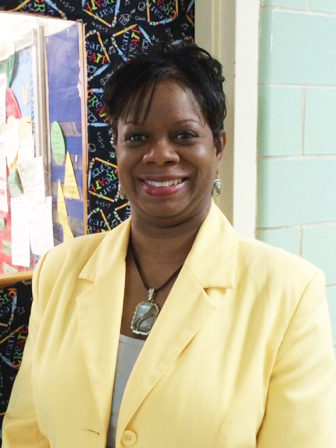How a Mobile Principal Connects Students and Teachers at a Title I Elementary School
 Delsia Malone has headed W.E. Striplin — the Gadsden, AL, school she attended as a child — since 2004. Under her leadership, the K-5, Title I school now boasts a computer lab, iPads in every classroom, MacBooks for every teacher and a 1-to-1 program for fifth-grade students.
Delsia Malone has headed W.E. Striplin — the Gadsden, AL, school she attended as a child — since 2004. Under her leadership, the K-5, Title I school now boasts a computer lab, iPads in every classroom, MacBooks for every teacher and a 1-to-1 program for fifth-grade students.
THE Journal: You have said you like to model using technology for your teachers and students. How so?
Delsia Malone: Well, I’m rarely in my office during school hours. I’m out with the teachers and students, bringing along my iPad so I can stay connected. I tweet up a storm, I flip faculty meetings, I create things online, and I’ve set up our school wiki page and Edmodo group. I’m not perfect at technology, but when students and teachers see that it’s okay to try things and make mistakes, they feel the freedom to explore and be creative.
THE Journal: The district has a BYOD program. What is the rationale there?
Malone: Oh yeah. Cell phones are not banned. We’re tweeting throughout the day, posting things on Facebook and Instagram. A lot of principals get bent out of shape about the teachers with cell phones, but this is a 21st century world, and the phone is now a 21st century learning tool, so why ban it? You will very seldom go anywhere in our school and not see teachers and students with some form of technology in their hands. It’s become like the paper and pencil used to be. And when my teachers come to me with something new they want me to purchase and I can see how it’s going to help them with their instruction, count me in.
THE Journal: How did the flipped faculty meetings come about?
Malone: I never liked faculty meetings as a teacher, and as a principal I never liked wasting my teachers’ time just to say, “How was your day?” or “We need to make sure we’re turning off our lights and closing our doors and shutting down the computer at the end of the day.” Such a waste! Time with the staff should be about what we can do to help ourselves grow professionally, and help our students be more successful. So I started video recording messages to teachers, and I’d post them in a forum such as Edmodo or our wiki page and make it available on YouTube. It doesn’t have to be me. It could be someone else doing a training, but we post them and then everyone can participate asynchronously. The faculty meeting doesn’t have to be from 3 to 3:30 with everyone sitting in one room.
THE Journal: What’s the best aspect of technology for a school like yours?
Malone: Connections. When I was in school, the only learning that took place was right there with that little group of people you were in that classroom with. Now kids are learning with the kids across the hall, the kids next door, the kids across town, the kids in the state next to us, in the country above us, in the country below us and across the waters. Someone in our district started a #USAKids chat, and our students now connect with classes as far away as Australia. Our teachers are Skyping with teachers around the world. And as a principal, I’m connected with educators from all over. Once you get your feet wet in this new world, there’s no turning back.
THE Journal: You have a long history at this school.
Malone: I do. I’ve been principal since 2004, and I was a teacher before that. My own kids went here, and I was here from first through fifth grade. In fact, I taught third grade in the very same classroom where I was a third-grade student.
THE Journal: What was that experience like?
Malone: It was surreal, because that’s the room where I got my first D in conduct for talking too much. My mom was not happy, but I was a talker!
THE Journal: Maybe technology would have helped?
Malone: Definitely. That’s probably why I was so bad — I had to find my own entertainment. Kids today have far more opportunities than I ever had. When you have all this technology, behavior problems are not a big issue, because these kids want to use it. And the first time you ban them from it because of their behavior is the last time you have a behavior problem.
| You can see more great feature articles in the latest issue of our monthly digital edition. |
About the Author
Dan Gordon is a freelance writer based in Agoura Hills, CA.